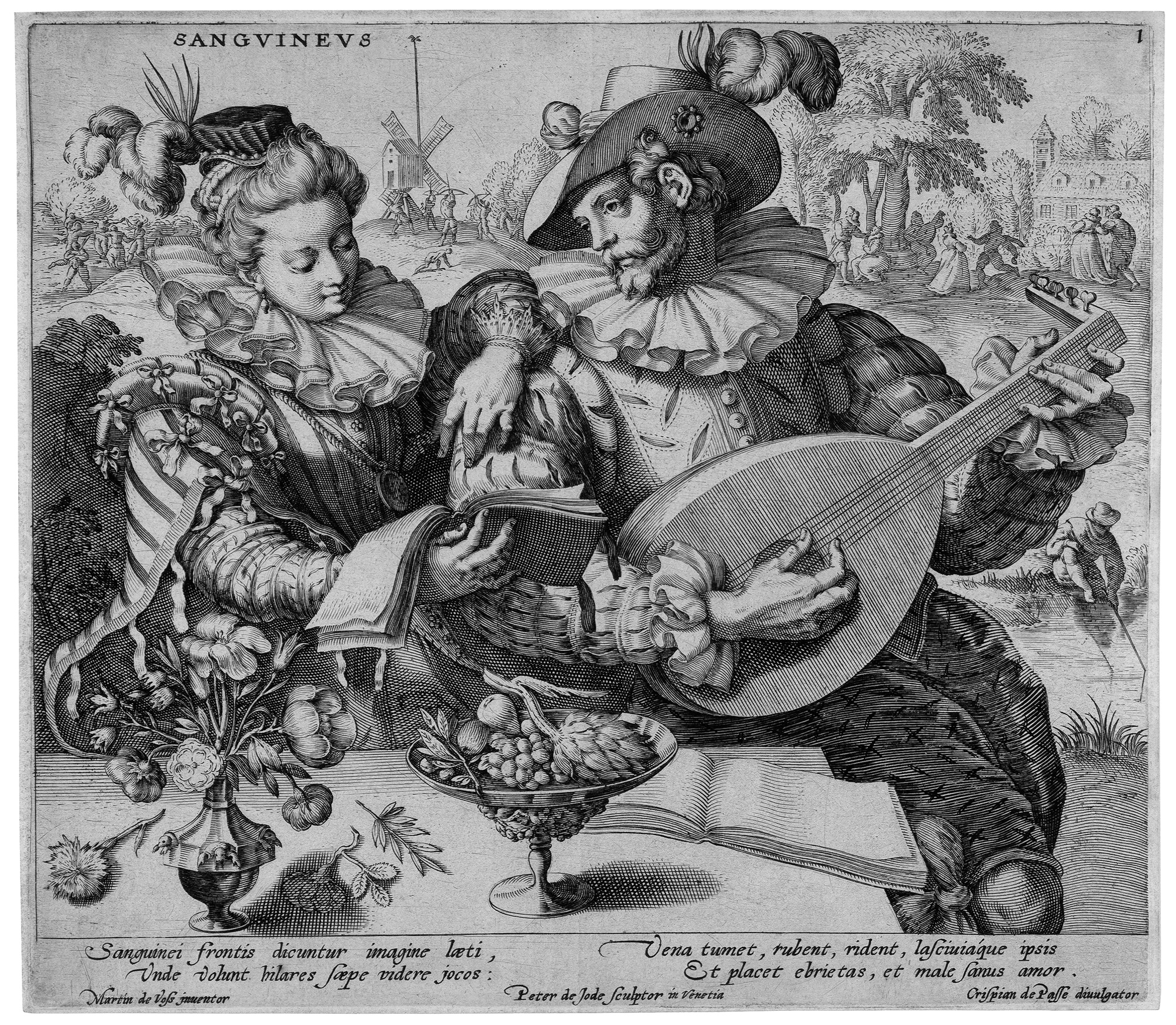Loading the page ...
Pieter de Jode the Elder
(1570–1637, Antwerp)
The Four Temperaments (Sanguineus; Phlegmaticus; Cholericus; Melancholicus). Set of four engravings after Maarten de Vos. Each approx. 19.4 x 22.1 cm. Hollstein (de Jode) 101–104; The New Hollstein (M. de Vos) 1478–81.
The iconographic abundance and the consummate engraving technique demonstrated in this rare suite make it a masterpiece of late Flemish Mannerism. The author, Pieter de Jode the Elder, was the son of the Antwerp engraver, Gerard de Jode. According to Carel van Mander, he studied under Hendrick Goltzius in Haarlem and his spirited, disciplined and technically sophisticated engraving technique undoubtedly owes a great deal to the formative example of his teacher. In the early 1590s, de Jode was active in Amsterdam and subsequently spent a number of years in Italy, where the present suite based on inventions by Maarten de Vos arose. The address indicates that Pieter made the engravings in Venice, the suite being published by Crispijn de Passe. After returning from Italy, de Jode was accepted into the Antwerp Guild of St. Luke as a master’s son around 1599/1600.
The individual scenes in the suite are of a narrative succinctness and expressiveness which go beyond the stylistic idiom of the designs by Maerten de Vos. De Jode evidently took artistic liberties with these prototypes, giving each scene its own distinctive character. The Four Temperaments are portrayed in accordance with the teachings of Hippocrates of Kós. Every basic temperament has a clear reciprocal relationship with the four elements. The allegorical subject matter provides the engraver with a welcome opportunity to furnish each episode with a wealth of narrative, genre-like details. The portrayal of the handsome, elegant couple harmoniously making music in the open air is quite splendid. De Jode has depicted each bow and button on their richly shimmering costumes with visible pleasure. The attractive woman rests her left hand on the shoulder of the dashing cavalier in a gesture of trust and tenderness. The intimate scene radiates an atmosphere of courtly elegance and relaxed joie de vivre. In stark contrast, the grim-faced Cholericus is portrayed in the form of a rabid lansquenet. Here again, however, de Jode has seized the opportunity to brighten up the scene with subtly observed anecdotal details, thereby injecting a lighter note. A pretty female sutler sporting a jaunty feathered hat accompanies the rake. She clutches a little Bolognese dog to her bosom and has various poultry birds, radishes and root vegetables on her person in preparation for the journey ahead.
Superb, contrasting and tonal impressions with thread margins. The entry in Hollstein, volume IX (de Jode) is misleading. The suite consists of four, not five engravings. The Hollstein number given in Wurzbach refers to a series on the Five Senses. Minor ageing, the last sheet of the series with a slight speck of colour, otherwise in excellent condition. From the collection of Gaston de Ramaix (Lugt 4099).
